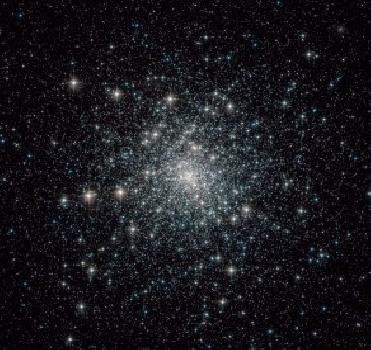
The shining image of Messier 30 (M 30) was taken by Hubble's Advanced Camera for Surveys (ACS). Image Credit: ESA/NASA.
PARIS (BNS): Astronomers with the help of Hubble Space Telescope have uncovered two distinct kinds of 'rejuvenated' stars in the globular cluster Messier 30.
According to a ESA news release, the study has revealed that both stellar collisions and a process sometimes called vampirism are behind this cosmic "face lift". Both the blue stragglers were produced during the 'Core Collapse.' Such dynamic event had occurred in Messier 30 some billion years ago.
"Our observations demonstrate that blue stragglers formed by collisions have slightly different properties from those formed by vampirism. This provides a direct demonstration that the two formation scenarios are valid and that they are both operating simultaneously in this cluster," says team member Giacomo Beccari from ESA, as per the report.
Using data from the Wide Field Planetary Camera 2 (WFPC2) aboard Hubble, astronomers found that these "straggling" stars are much more concentrated towards the centre of the cluster than the average star. It therefore indicates that the blue stragglers are more massive than the average star in this cluster.
"The two distinct populations of blue stragglers discovered in Messier 30 are the relics of the collapse of the core that occurred two billion years ago. We should now try to see if other globular clusters present this double population of blue stragglers," said Francesco Ferraro from the University of Bologna in Italy.
In general, stars in globular clusters are very old (12-13 billion years). But few who are significantly younger than the rest of the population are called blue stragglers. They go back from the old age and transform themselves into a hotter and brighter youth, gaining a new lease on life in the process.
The formation of blue stragglers is still a mystery in Astrophysics. Messier 30 was discovered by Charles Messier in 1764.
 Previous Article
Previous Article Next Article
Next Article













The Indian Air Force, in its flight trials evaluation report submitted before the Defence Ministry l..
view articleAn insight into the Medium Multi-Role Combat Aircraft competition...
view articleSky enthusiasts can now spot the International Space Station (ISS) commanded by Indian-American astr..
view article